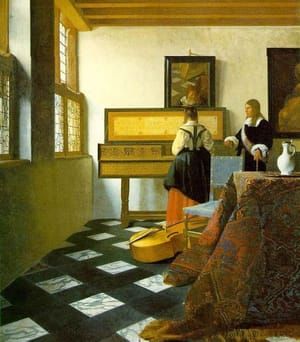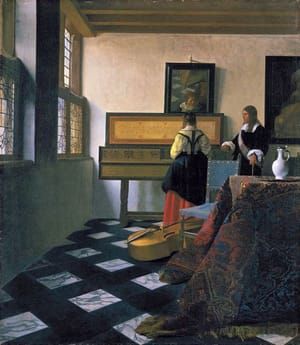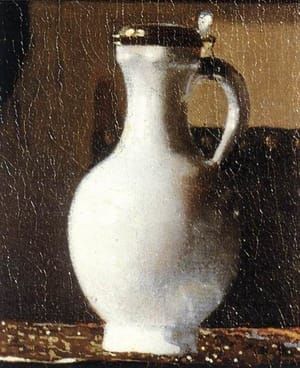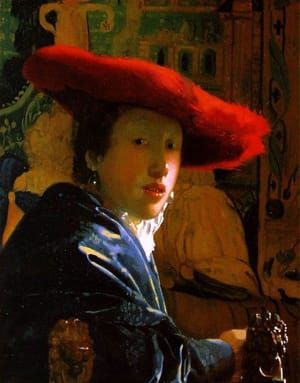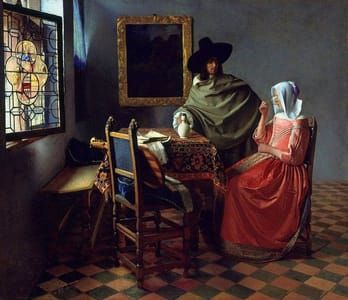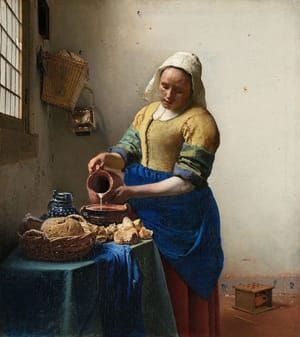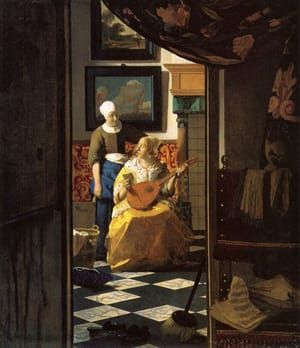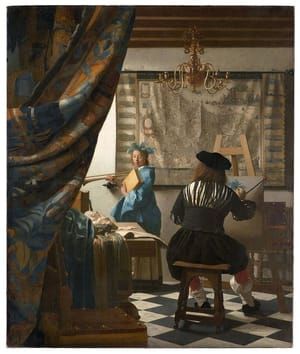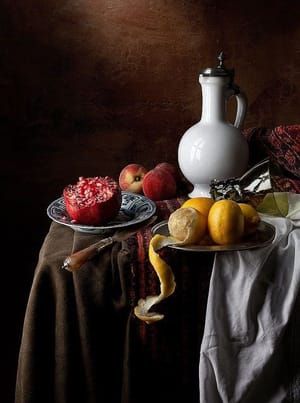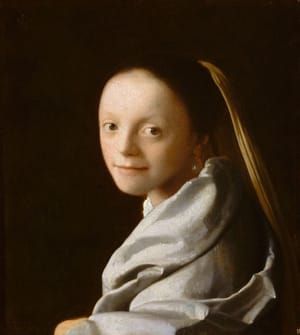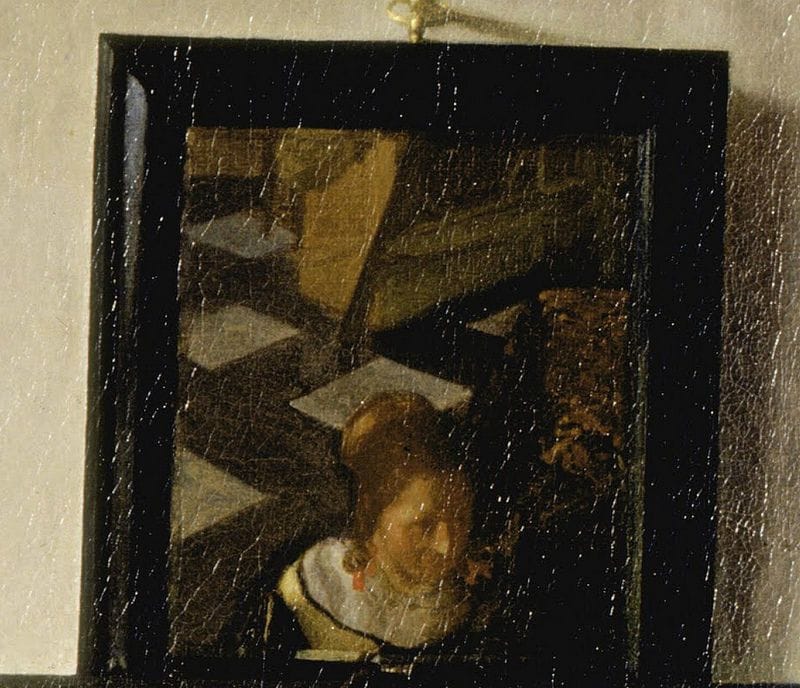

Lady at the Virginal with a Gentleman, or The Music Lesson, 1662
Johannes Vermeer
A Lady at the Virginal with a Gentleman entered the Royal Collection in 1762 as a work by Frans van Mieris the Elder owing to a misreading of the signature. Indeed, the name of the artist was not correctly identified until 1866 by Théophile Thoré....
Paintings by Vermeer - of which there are only 34 - are difficult to date and any chronology has to be based on an interpretation of style and complexity of composition. A Lady at the Virginals was undoubtedly painted during the 1660s, but it is not possible to be more specific, although there is at present a consensus of c.1662-4. The composition is characterized by the rigorous use of perspective to draw the eye towards the back of the room where the figures are situated - the young woman rather surprisingly seen from the back. The viewer is at first more aware of the jutting corner of the table, the chair and the bass viol than of the figures themselves, whose privacy is thereby protected. The back of the room, dominated by the virginals comparable with those made by Andreas Ruckers the Elder, is like a grid of verticals and horizontals into which the figures are carefully locked. Light is admitted through the windows on the left and fills the room, casting only soft, subtle shadows. A striking feature of the composition in this part is the mirror on the wall where the slightly blurred reflections include the young woman's face, part of the table and the legs of an artist's easel. The implication of this glimpsed easel is that Vermeer shares the same space as the figures he is depicting, but as a result of this artifice he is also, like the viewer, standing outside that space. In fact, as Alpers has observed, Vermeer's composition is based on exclusion. Many of the elements, particularly at the back of the room, are seen only partially, as though indicating 'the appearance of the world as ungraspable'.
The inscription on the lid of the virginal, MUSICA LETITIAE CO[ME]S / MEDICINA DOLOR[IS], means 'Music is a companion in pleasure and a balm in sorrow.' It suggests that it is the relationship between the man and the young woman that is being explored by the artist, but what stage that relationship has reached is impossible to say. The fact that there are two musical instruments implies shared pleasures and a potential harmony, which is also indicated by the rapt expression on the man's face as he listens to the young woman or sings as she plays on the virginal. That some aspect of love is the presiding theme can be deduced not only from paintings by Vermeer's contemporaries, such as Metsu, but also by the presence in A Lady at the Virginal of the picture of Roman Charity (Cimon and Pero) by Dirck van Baburen on the wall in the background on the right. This is the story of how the imprisoned Cimon was nourished by his daughter Pero, symbolizing the ideal of Christian charity both physically and spiritually. It is known that Vermeer's mother-in-law, Maria Thins, owned such a painting and Vermeer did use another painting by this artist in the background of two of his other pictures. The vase on the table is placed below Roman Charity and so with regard to that picture may be an additional correlative for the young people in the room.
The mood of the present interior by Vermeer is created as much by the careful selection of so few objects as by the confrontation of the two figures in whose plight, in the words of Lawrence Gowing, 'there rests, as gentle as the air itself, an allegory of liberty and bondage, an allegory, as the inscription informs us, of the pleasure and melancholy of love'.
[https://www.royalcollection.org.uk/collection/405346/lady-at-the-virginals-with-a-gentleman]
I will start from the left of the painting exposing the importance of light in Vermeer´s paintings and explaining why did the author decided to use a marble floor and not another one. Then, I will focus on the main scene of the painting, that is, the girl playing the virginal and the gentleman looking at her, and finally, I will explain the importance that the picture that appears in the upper right side as well as the reasons for which Vermeer decided to include a white jar and a table covered by a wonderful carpet.
Begining with the analysis of the windows, it is important to say how The Music Lesson is the only painting with two series of windows in Vermeer´s collection....
[https://vermeer0708.wordpress.com/2011/04/21/the-music-lesson-technical-details-about-the-painting/]
Uploaded on Jan 15, 2018 by Suzan Hamer
Johannes Vermeer
artistArthur
coming soon
